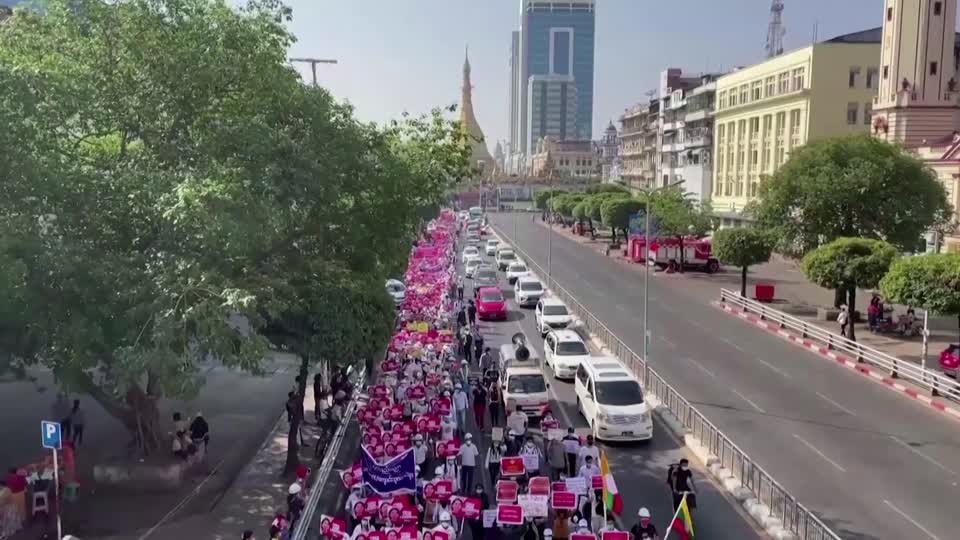In a Yangon pagoda, four suspected ex-criminals lie stranded on the floor.
They were caught overnight by residents of the Sanchaung neighborhood, who fear that the Myanmar military has released them to cause trouble.
Concern about criminal activity has increased since Friday (February 12), when the junta announced it would release 23,000 prisoners.
They said the change was consistent with “establishing a new democratic state with peace, development and discipline”
But unverified images on social media have fueled rumors that criminals are trying to stir up the unrest by setting fires or poisoning the water supply.
Tin Myint, who was among the crowd that arrested the men in Sanchaung, cited pro-democracy protests in 1988 – when the military was widely accused of freeing criminals to stage attacks.
“We think that the military intends to cause violence against these criminals by making them infiltrate peaceful protests. Then, the military will have a reason to extend its power to suppress violence ”.
The men were turned over to the police. The government and army were not immediately available for comment.
This is just an episode of a night when residents patrolled together, afraid of attacks and prison strikes.
But despite their concerns, people were once again in force on Sunday (February 14) – from thousands marching in Yangon and motorcycle convoys in the capital Naypidaw, to drums in the coastal city of Dawei and revolutionary songs in Waimaw, mountainous Kachin from the far north.
A common thread in these protests – the face of Aung San Suu Kyi.
His detention, on charges of importing walkie-talkies, expires on Monday (February 15). His lawyer was not immediately available for comment.
Video transcription
– In a Yangon Pagoda, four suspected former criminals are strapped to the floor. They were caught overnight by residents of the Sanchanung neighborhood, who fear that the Myanmar military has released them to cause trouble.
– [SPEAKING BURMESE]
Concerns about criminal activity have increased since Friday, when the junta announced it would release 23,000 prisoners. They said the move was consistent with the establishment of a new democratic state with peace, development and discipline. But unverified images on social media have fueled rumors that criminals are trying to stir up the unrest by setting fires or poisoning the water supply.
– [SPEAKING BURMESE]
Tin Myint, who was among the crowds that arrested a man in Sanchaung, cited pro-democracy protests in 1988 – when the military was widely accused of freeing criminals to stage attacks.
– [SPEAKING BURMESE]
INTERPRETER: We believe that the military intends to cause violence against these criminals, causing them to infiltrate peaceful protests.
– [SPEAKING BURMESE]
INTERPRETER: Then the military will have a reason to extend its power –
– [SPEAKING BURMESE]
INTERPRETER: – to suppress violence.
– [SPEAKING BURMESE]
INTERPRETER: The four men were handed over to the police. The government and the army cannot be reached for comment. This is just an episode of a night when residents patrolled together, afraid of attacks and police raids.
But despite their concerns, people were once again in force on Sunday – from thousands marching in Yangon and motorcycle convoys in the capital Naypidaw, to drums in the southeastern coastal town of Dawei and revolutionary songs and waving flags in Waimaw, more in mountainous Kachin, in the far north. A common thread in these protests – the face of Aung San Suu Kyi.
[CROWD CHANTING]
His detention on charges of importing walkie-talkies is set to expire on Monday. His lawyer was not immediately available for comment.
[APPLAUSE]
